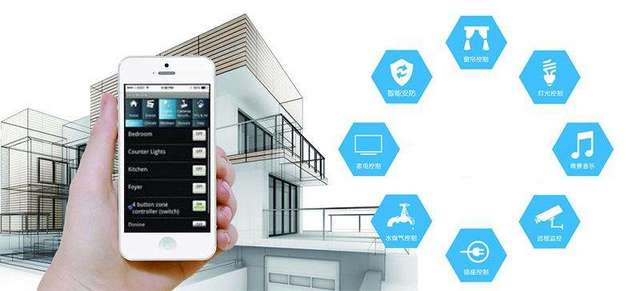With the development of cloud computing and big data, smart home plays an increasingly important role in people's lives. According to relevant data, the scale of China's smart home market reached 60 billion yuan in 2016. By 2018, smart home The scale will be expanded to over 100 billion yuan. So, what is the status quo of the development of smart homes in this one hundred billion scale market?
Smart home encounters external heat and cold
In recent years, smart homes have exhibited strong vitality on a global scale. According to reports, in 2014, the global smart home market was 5.2 billion U.S. dollars. By 2017, it is expected to reach nearly 100 billion U.S. dollars. The compound annual growth rate is about 20%. However, smart homes have repeatedly hit the wall in the domestic market and are caught in the embarrassing situation of the icy world.
According to data released by the market research firm Statista, in 2016, the United States was the country with the largest capacity in the global smart home market with US$ 9.711 billion, and China was US$ 520 million, ranking fourth; from the perspective of the growth rate of smart home penetration rate The United States ranked first with 5.8%, and this figure is only 0.1% in China. The disparity is alarming. Although the smart home scene is still in the incubation phase and has not been widely used worldwide, compared to the domestic market, smart homes are more popular in some developed countries. This is an indisputable fact.
The reason for the “heat and cold inside†of smart homes is due to the fact that the current smart home ecosystem has not yet been fully established, and scenes such as fragmentation, poor compatibility, and complicated operations have not yet been completely resolved. Consumers have difficulty understanding the smart homes. Wisdom and convenience, the “high-cold†impression of smart homes needs to be changed. On the other hand, the smart home sector lacks supporting regulations and uniform standards. The industry is mixed and the products are mixed. Consumers generally experience poorly and word of mouth is difficult to improve. Naturally difficult Drive consumers to pay. In addition, product prices and spending habits are also major factors hindering the popularity of smart homes. According to the survey conducted by the Speedway Institute, respondents who selected the above two accounted for more than 50% and 30%, respectively.

Multi-angle force smart home domestic market
In spite of this, the domestic smart home market is still very promising. This can be seen from the attitude of the relevant manufacturers and the investment enthusiasm of financial institutions. First, China’s overall economic situation has progressed steadily, with the rise of the middle class and rising consumption. Second, China has become the world’s largest Internet market. The integration of manufacturing and the Internet has gradually deepened. These two factors have made the domestic smart home market rapid Outbreak potential.
BAT took the lead. Xiaomi and Meizu followed. Haier, Midea, Gree, and Kangjie Deng KJD entered the game successively, and they had been focusing on R&D since 2013. These two years won the continuity of mystery investors. The 50 million startup brands Tijio, Tianqiao smart home brands, radio and television, telecommunications, mobile and other operators are also interested in sub-porridge. Last month, the domestic strength of the housing company to create 15.041 billion investment in LeTV became a hot topic of discussion, there are points of view or paving the way for its smart home strategy. This month, Baidu purchased a wholly-owned smart home control and hardware startup company, Raven Technologies, to further commercialize artificial intelligence. The overall market presents a mix of specialization, complementation, competition, and cooperation.
According to relevant industry sources, as artificial intelligence technology continues to mature, more and more consumers will use smart homes, and smart homes will also bring qualitative changes to consumers' lives.
SG(B) Series Of Non-encapsulated Dry-type Transformer
Dry-Type Transformer,Non-Encapsulated Transformer,Series Of Non-Encapsulated Transformer,Electronic Power Encapsulated Transformer
SANON DOTRANSÂ Co., Ltd. , https://www.sntctransformer.com
